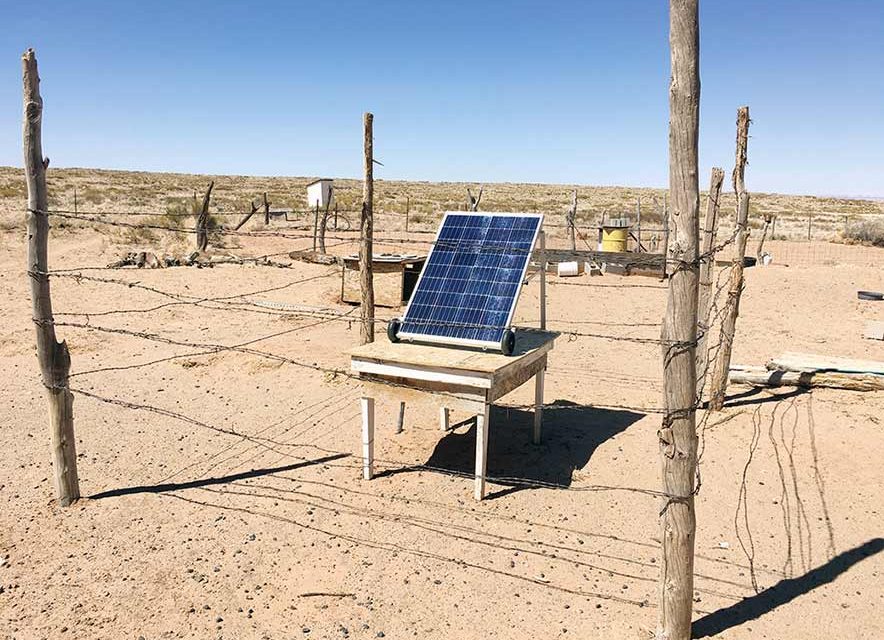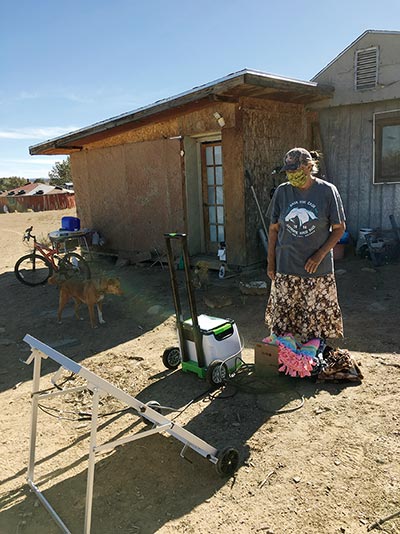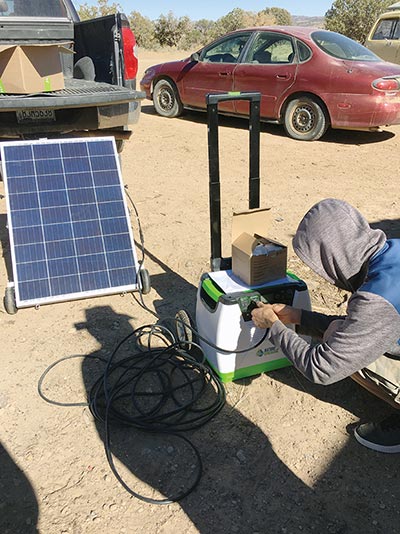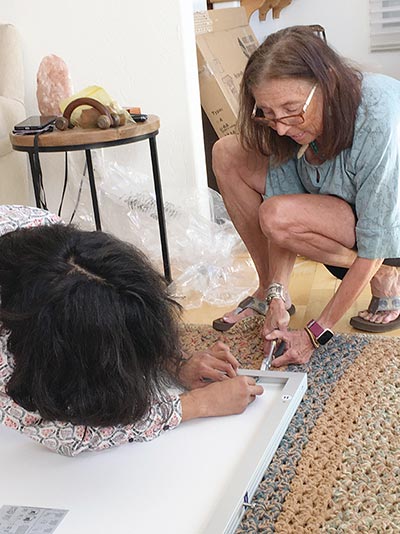
Grassroots effort provides solar power to 12 off-grid HPL homes

Courtesy photo
One recipient in Coalmine Canyon built this fence to protect their panel from livestock.
HARD ROCK, Ariz.
Working around the clock using the Coronavirus Aid, Relief and Economic Security Act funds, Navajo Tribal Utility Authority was able to connect 737 families to the electrical grid and provide 3,000-kilowatt solar power systems to another 294.

Courtesy photo
Joella Ashike of Big Mountain, Ariz., checks out her new solar system.
While it was a huge accomplishment in the few months the CARES funds were available, it barely made a dent in the estimated 15,000 homes on the Navajo Nation that lack electricity — many of them way, way off the grid.
Mary Katherine Smith, who lives in a remote family cabin on the Hopi Partitioned Land near Hard Rock, began to wonder if maybe NTUA was thinking too big.
“For most elders, like me, all they need is a small refrigerator so they can have fresh produce and a place to recharge their phone,” she said. “For the other stuff, we’re pretty used to living without it.”
Smith was in the middle of a food delivery project on the HPL when her own aging solar system gave out.
She was eventually able to replace enough parts to get it working again, but was surprised when she flipped the switch and it didn’t come on.
Eventually her nephew, Deyoun Greyeyes, figured out the system had to be controlled by a cell phone via Bluetooth.
“I thought, ‘I don’t like this,’” she said. “It’s too complicated. I like the old-style ones. And what if somebody doesn’t have a phone?”
Doing some online research, she found a compact 1.8-kilowatt solar generator — basically a battery — that hooked up to a small solar panel and also came with a string of six lights. It was only about $3,000.
“I thought, ‘That’s all I need,’” Smith said.
Her friend Cheri Breeman in Sedona launched a GoFundMe page for her, and within two days had raised enough to purchase a system for Smith.
“Cheri said, ‘Let’s just let the GoFundMe go for a while and see what happens,’” Smith recalled.
In a few weeks, they had raised enough to purchase 12 of the packages. Smith, Breeman and Greyeyes assembled the units and Smith delivered them.
After delivering groceries all winter, she knew whom she wanted them to go to: “the families who really have nothing.”
One man, for example, had asked for batteries to enjoy his main pastime: listening to KTNN.

Courtesy photo
Jeremy Ashike connects his new solar panel to its generator. He and his grandmother, Joella Ashike, were the first of the recipients.
“Now he can plug his radio in and listen any time,” said Smith. “He was really excited.”
Another couple needed a refrigerator to store their grandson’s medication.

Courtesy photo
Mary Katherine Smith, left, and Cheri Breeman assemble a solar panel in Sedona, Ariz., for delivery to a remote family on Hopi Partitioned Land.
Both the panels and the generators are on wheels like a travel bag, so if an elder needed to do some work outside with power tools, he could simply roll it out.
Unlike the NTUA solar systems, there’s no monthly charge for maintenance. The durable, compact generators don’t need much, but it’s up to the recipients to keep them operable.
Smith was hoping to get some CARES Act funding to expand the project, working with then-Hard Rock Chapter President Tim Johnson to write a proposal, but her Council delegate didn’t see their email in time and never submitted it.
She feels the project could easily be replicated all over the reservation, an inexpensive stopgap solution while people wait for the electrical grid to reach them or save up for a larger off-grid system.
“People look at us living off the grid and feel sorry for us,” she said, “but the fact is most of us have learned very well how to live out here and don’t need a whole lot of help.
“Just a small, easily maintained system like this can really improve people’s quality of life,” she said.
As a public service, the Navajo Times is making all coverage of the coronavirus pandemic fully available on its website. Please support the Times by subscribing.
How to protect yourself and others.
Why masks work. Which masks are best.
Resources for coronavirus assistance








 Highway 264,
Highway 264, I-40, WB @ Winslow
I-40, WB @ Winslow